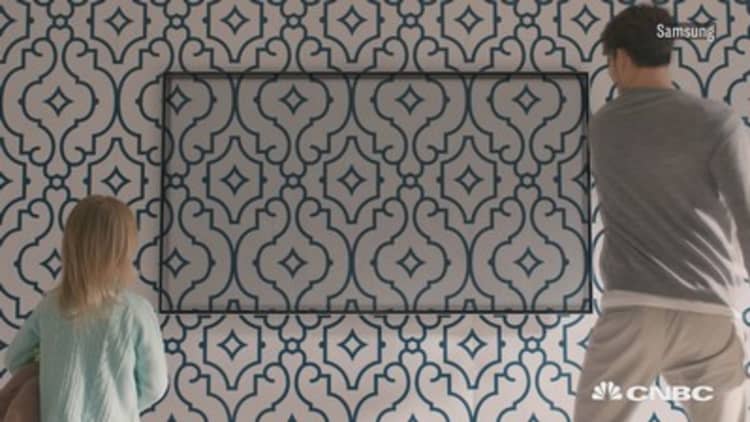It seems like we've just got 4K TVs, and already the world's largest electronics manufacturers are talking up the next generation of the technology: 8K.
At the IFA consumer electronics show in Berlin, Germany, fierce South Korean rivals Samsung and LG showed off their latest TV offerings, sporting giant screen sizes and eye-popping colors.
Both companies unveiled 8K TVs, claiming 8K is the future of the TV market.

What is 8K?
8K refers to the resolution of a TV display. It has four times as many pixels as 4K — twice the pixels horizontally and twice the pixels vertically — with the idea that this will make pictures clearer and sharper, particularly on larger screen sizes such as 65 inches and above.
Samsung took the wraps off its 8K QLED TV known as the Q900. Meanwhile, LG unveiled an 88-inch 8K OLED TV on Wednesday.
What do OLED and QLED mean?
TV jargon can be confusing, but let's break it down. Many TVs still use liquid crystal display (LCD) technology on their TVs. It works by shining a backlight through some color filters to produce an image on the screen. But this process can lead to a lot of light being lost and imperfect colors.
The QLED in Samsung's TV name stands for quantum dot light emitting diode. Samsung puts a sheet of quantum dots, or special particles, in front of the backlight. These particles light up to more perfect colors when a certain shade of light is shone on them. This can allow the TV to produce brighter and truer colors.
OLED or organic light emitting diode technology does not require a backlight. Instead, OLED pixels produce their own light, allowing each individual pixel to control its color. The theory is that this creates more contrasting colors.
Samsung and LG are going head to head with competing screen technology but with an 8K resolution.
Do we even need 8K?
Well, the big TV manufacturers think we do, mainly because 4K has gone mainstream and they are looking forward to the next few years to try to be ahead of the competition.
"So as 4K market becomes a commonplace, for supply chain and OEMs (original equipment manufacturers) the next big thing is 8K to differentiate. We estimate the rapid advancement and adoption of 4K TVs in China market will also drive 8K adoption in coming years, followed by North America, Western Europe and so forth," Neil Shah, research director at Counterpoint Research, told CNBC via email on Wednesday.
The analyst firm estimates close to 250,000 8K TV panels will be shipped this year, rising to close to 7 million by 2022. And with this will come even bigger screen sizes, because 8K allows a clearer picture at a larger scale. LG's TV, for example, is 88 inches. Counterpoint expects the average size of an 8K TV to be 65 inches, but plus-80-inch sets will be popular too.
Hefty price tags
8K is a new technology and has several potential stumbling blocks that could hamper its adoption. The first is cost. Japan's Sharp already has a 70-inch 8K TV in the market which costs 11,199 euros in Europe or over $13,000. While Samsung and LG have not yet released prices for their 8K sets, analysts expect that it could be in this region. That cost, of course, is likely to come down over the years, but will limit the size of the audience at the beginning.
Another roadblock will be content.
"8K remains niche until programs are widely available in 8K, which is years away," Neil Campling, co-head of the global thematic group at Mirabaud Securities, told CNBC by phone on Wednesday.
"We saw this with 4K. Very slow adoption to start, and actually many early TVs were not compatible with 4K services."
That did change, however, with major content creators such as Netflix and Amazon creating shows in 4K. That process is currently not happening with 8K, although movie studios have the capability to do so.
The ability to get 8K content to consumers could also be an issue. Currently, broadband speeds are sufficient for 4K streaming off services such as Netflix or Amazon. But they may not be for 8K content.
"It requires enormous amounts of bandwidth which for many people exceeds what they have coming into their homes. Or puts a huge burden on the broadband or cable supplier," Ben Wood, chief of research at CCS Insight, told CNBC by phone on Wednesday.
"So not only will there be difficulties in getting into people's homes, but there will be reluctance from broadband providers to provide it because it will cost so much for them to deliver," he added, with the caveat that broadband speeds will eventually catch up.
Correction: This story has been updated to show that QLED in Samsung's TV name stands for quantum dot light emitting diode and to clarify the difference between 8K and 4K.


